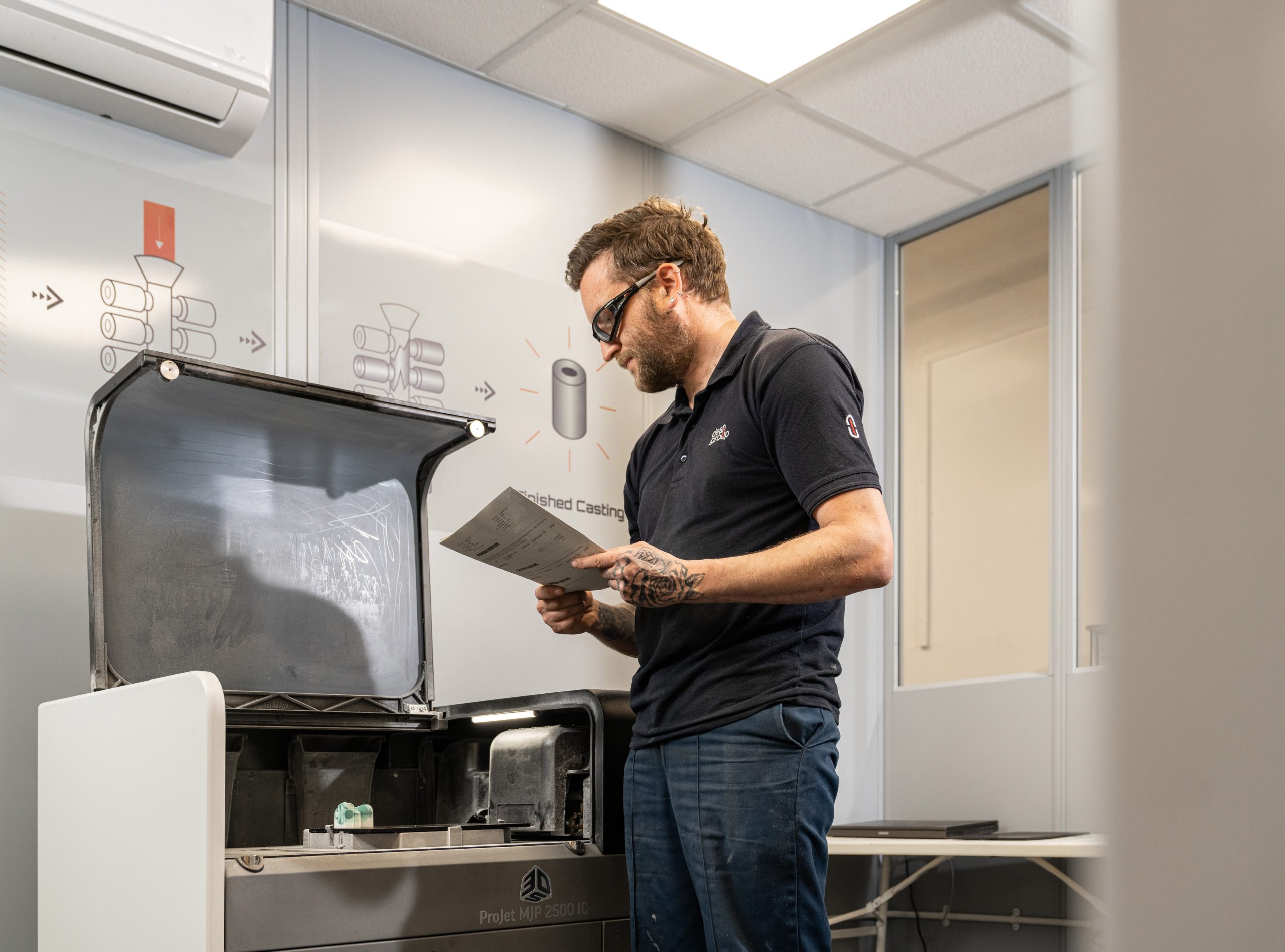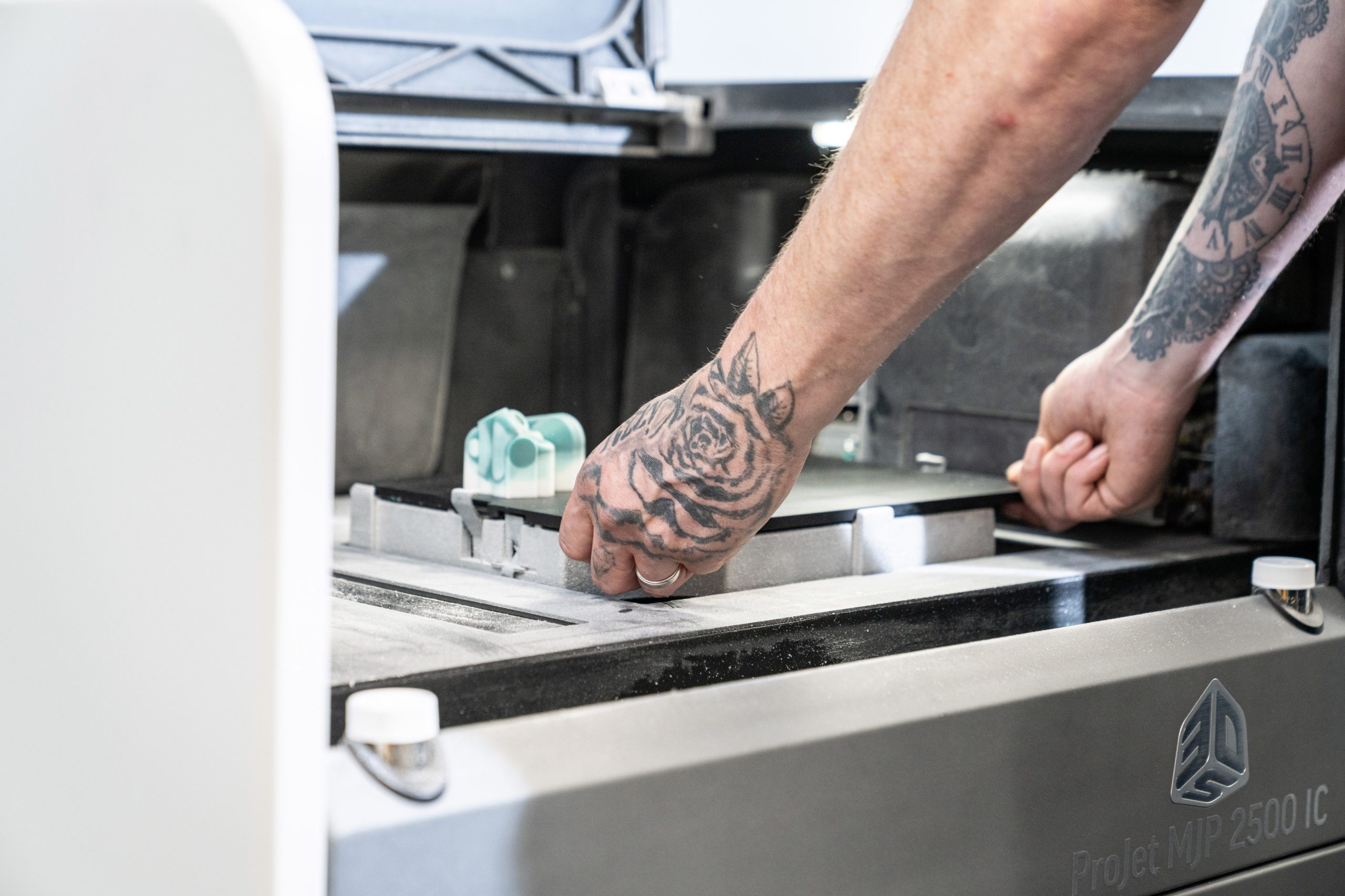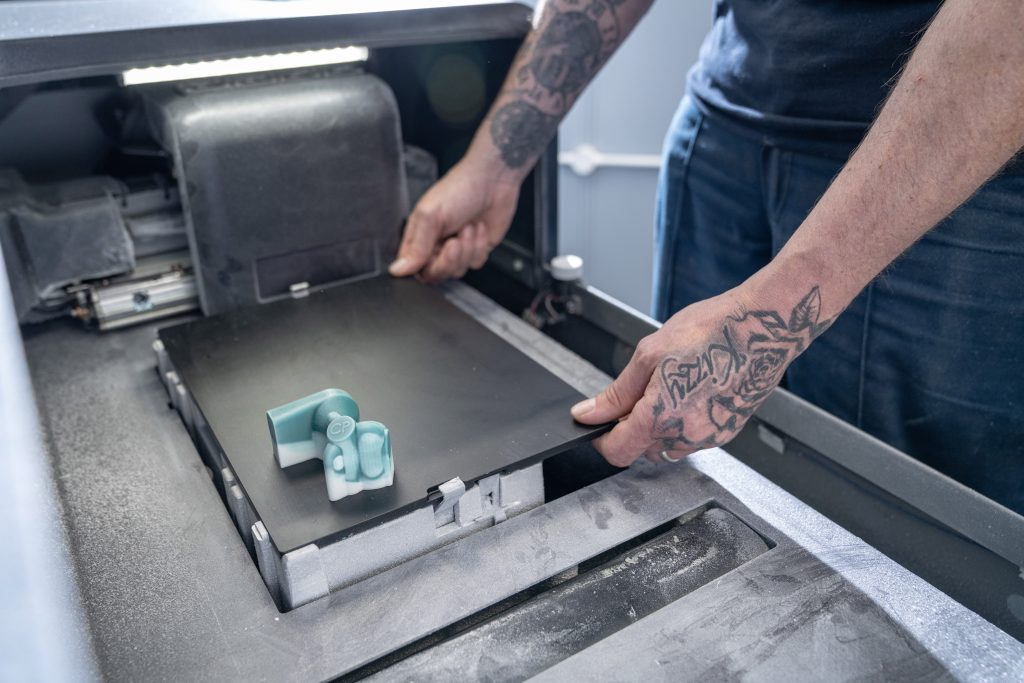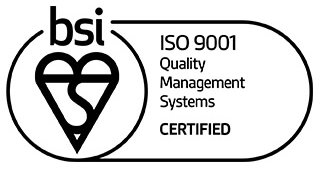3D Printing for Casting
3D Printed Rapid Prototyping
When you are looking to build a new product or feature, you want to be sure it will work in the way you believe it to. Dean Group International can assist your product development process with quality investment casting test parts prior to production tooling. In addition to production requirements, Dean Group International is committed to supporting all companies, no matter their size, in their pursuit of product creation, no matter the batch size.


What is 3D Rapid Prototyping?
3D printing for metal casting is a manufacturing process that uses digital designs to create physical wax prototypes quickly and accurately. This is achieved by taking the dimensional data from your provided CAD file and printing it layer by layer.
With our 3D printing systems, we offer affordable one-off or continuous production orders bespoke from a vast range of alloys. All castings are made in the UK at our ISO 9001:2015-approved foundry located in Manchester, and all of the above are guaranteed to be UK-made and UK-certified.
3D Wax Rapid Prototyping Process
Step 1: Initial Design
The process begins with the client's digital designs provided to us or created by our experienced design team using Computer-Aided Design (CAD) software. If necessary, we also offer a 3D model generation service to quickly generate suitable 3D models for 3D printing and investment casting.
Step 2: Slicing and Model Preparation
The CAD file is imported into specialised slicing software, which divides the model into thin layers, typically between 0.002 and 0.003 inches thick. This sliced model is then prepared for printing.
Step 3: Wax Printing Process
The wax material, crucial for optimal printing results, is melted and filled into the printer's reservoir. Our ThermoJet wax printer uses a print head to deposit thin layers of molten wax onto a build platform. The print head precisely moves horizontally and vertically, following the instructions from the sliced model.
Step 4: Layer-by-Layer Building
The ThermoJet wax printer builds the wax model layer by layer, fusing each layer with the previous one as it cools and solidifies. This meticulous layering process continues until the entire model is complete.
Step 5: Support Structures
Support structures are added during printing to ensure the stability of overhanging or delicate features when necessary. These structures can be easily removed once the printing is complete.
Step 6: Post-Printing Finishing
After printing, the wax model goes through post-processing steps to refine the surface finish and eliminate imperfections. This ensures a high-quality prototype ready for evaluation and testing.
Step 7: Final Inspections, Evaluations and Revisions
Thorough inspections are conducted to check the wax model for defects or errors. Dimensions, details, and functionality are carefully verified to guarantee the accuracy of the provided design.
The wax model finally serves as the intended high-quality prototype for evaluation and testing purposes of the planned metal casting. This allows our design clients to visualise and fine-tune their product concepts before committing to costly tooling for other processes, such as die casting.
Benefits of Rapid Prototyping
Dean Group International’s 3D printing services, operated by our dedicated and experienced team, will provide the support needed for better design, testing & manufactured products, all within a matter of weeks.
The flexibility of offering is suitable for all on any project and or endeavour. Other benefits are:

Design Validation: 3D prototype printing provides designers with physical models that accurately represent their digital designs. This allows for visual inspection and physical testing of the product's form, fit, and function, ensuring that it meets expectations before embarking on costly manufacturing processes.
Cost-Effective Metal Casting: Rapid prototyping eliminates the need for traditional tooling methods, such as moulds or dies, which can be expensive and time-consuming to create. With 3D printing, manufacturers can produce prototypes directly from digital files, saving time and money in the early stages of product development.
Quick Design Iterations: With 3D prototype printing, design modifications can be easily implemented and tested. This iterative process enables manufacturers to quickly adjust and refine their designs, leading to more efficient product development cycles.
Prototyping Complex Geometries: Unlike traditional manufacturing methods, 3D printing allows for the creation of highly complex geometries with ease. This level of design freedom opens up new possibilities for innovative and advanced product concepts that may not be achievable using conventional manufacturing techniques.
Reduced Time to Market: By leveraging 3D prototype printing, manufacturers can accelerate their product development timelines. Rapid iteration cycles and quick design validation enable businesses to bring their products to market faster, gaining a competitive edge in their respective industries.
Reduced Financial Risk: With physical prototypes in hand, manufacturers can assess the feasibility of their designs and identify any potential issues or limitations early on. This mitigates the risk of costly mistakes during mass production and ensures a higher likelihood of a successful product launch.
3D Printed Rapid Prototyping is one of the best ways to minimise development costs on iterations of your product. Testing the theory of your design before full product development allows you to reduce the development costs of your product, as it helps you avoid the chance of building something which doesn’t work or has snags. It also avoids any embarrassing and costly issues that customers may come across when your product launches.
Thermojet Wax Modelling System
Using a 3D model, we’ll create a wax replica of your part, built in layers using thermojet (printed) technology as part of our rapid prototyping process. These are then processed at our Manchester foundry in a matter of weeks and often result in castings that have gone through the same manufacturing procedure and are functionally identical to their hard-tooled counterparts, just without the need to commit or pay for tooling.
The advantage of this particular process is just how quick it is, being much quicker than other available options. As such, the thermojet wax system acts as an efficient way to create small quantities of parts for validation or just small one-off batch orders.
As specialists in Lost Wax Casting, Dean Group International can take your initial wax model and use it to help you create the finished metal piece you need.
3D Model Manufacture
For us to be able to assist in the manufacture of parts, we must offer a 3D model. We usually would expect a base 3D model to be supplied or a 2D drawing to reference. Still, we understand that not all persons or companies have the ability or the technical knowledge to produce 3D models suitable for 3D printing and investment casting.
In our recent success with the Cloud Cities Barcelona project, 3D printed rapid prototyping played a crucial role in achieving our goals. This innovative approach allowed us to overcome unique challenges and contribute to creating essential components for intricate architectural design. By utilising 3D printing technology, we could design, test, cast, and machine high-quality nodes efficiently and effectively within the fixed installation deadline. Using 3D printed rapid prototyping offered us several key benefits that greatly contributed to the project's success.
FAQs
Thanks to advanced software and computer-aided design (CAD) capabilities, 3D rapid prototyping allows for accurate simulations and testing. First, engineers will virtually evaluate the prototypes' functionality and performance in a computer to eliminate early design errors. This will be followed up with a wax-printed example for physical evaluation. This is explored in more detail later in this blog.
This method contrasts with wasteful machining from solid processes, which involve removing whatever material you have chosen from a larger block to achieve the desired shape. Rapid prototyped parts are particularly useful for industries where precision, speed, and flexibility are critical to success; similar reasons to choose investment casting, which is why these two processes work so well together.
Other methods of prototype creation would take weeks or even months, depending on the complexity of the design and the materials used. In contrast, our rapid prototyping can produce a functional prototype far sooner, allowing companies to quickly test, review, update and overall refine their designs at the reduced cost of multiple miniature-printed designs
The wax model produced through ThermoJet wax printing serves as a high-quality prototype for further evaluation and testing. It can also be used as a pattern for investment casting processes, where the wax model is encased in ceramic and then melted away, leaving behind a cavity for the final metal casting.
With that knowledge, Dean Group International offers the service of 3D model generation with our experienced design team to get your parts manufactured quickly. Please get in touch for more details on this.
Contact Dean Group International for Your Investment Casting Quote
Registered in England VAT No: 146307478 Company Registration No: 1062820




